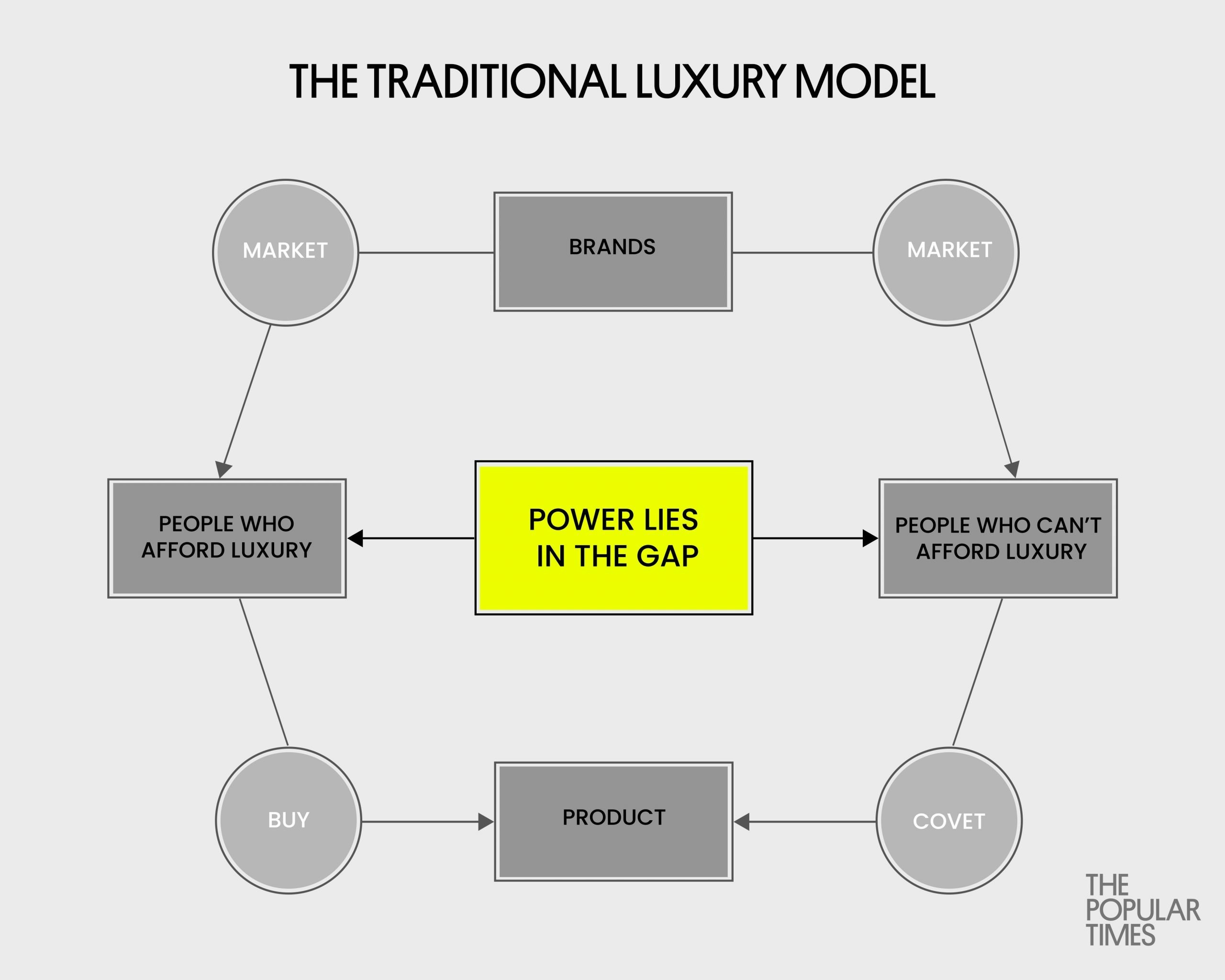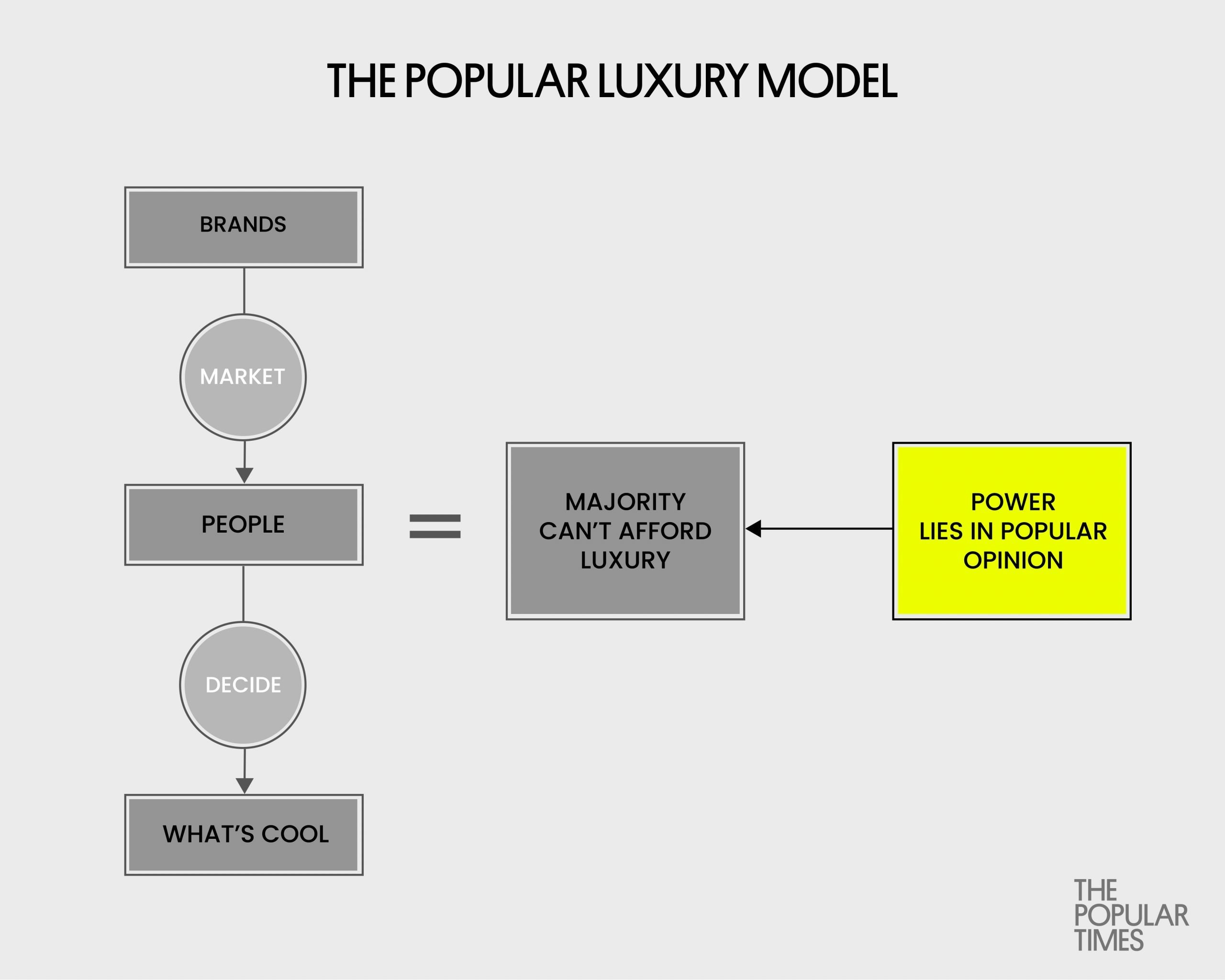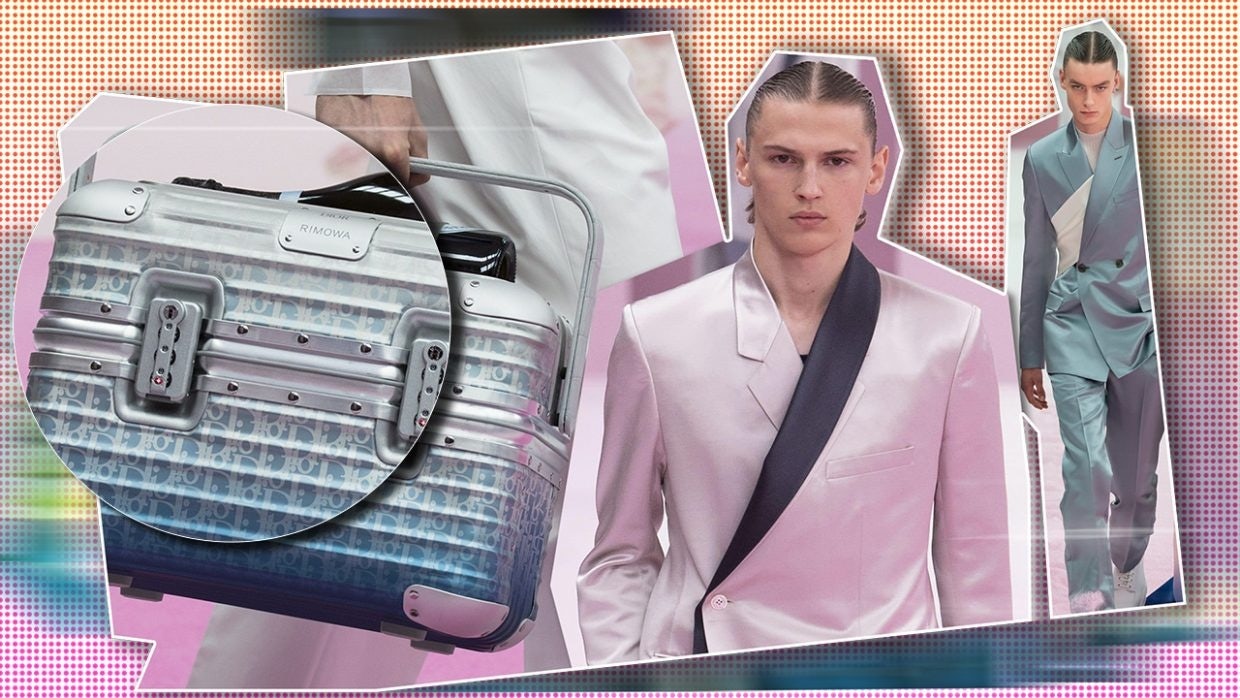This article originally appeared on The Popular Times, our partner publication on the intersection of popular culture and luxury.
Just ten years ago, luxury fashion was a space for the primarily white elite. Front row seats at fashion shows were for legacy publication editors; advertising space featured impossibly thin, white models; and stores were for well-heeled shoppers with deep wallets that could buy into the traditional luxury fantasy.
But with the onset of social media, this fantasy burst. Editors were shuffled to the second row to make way for hip-hop artists—a grand departure from the days when Kanye West was still being refused entry. Yet another new crop of faces laying claim to prime real estate were influencers, whose personal brands and audience reach now surpass those of traditional fashion glossies [The Popular Pact I.3.b].
And soon, the most important item on any given runway became a pair of sneakers in lieu of the latest it-bag or heel. All this change was accompanied by a new word, either murmured with quiet interest or brandished like a war banner in the face of luxury heavy-hitters: streetwear.
Critics have often pegged streetwear as a fad—with even its most influential proponent, Virgil Abloh, predicting that the trend would soon blow over. Recent seasons have indeed started to revert to comparatively tailored clothing, subtle palettes, and less “streetwear-looking” streetwear.
While some styles continue to change, the new audience to which it caters remains the same: proving that streetwear has an influence which reaches far beyond product. The true impact of streetwear is a new mindset and shift in power. Skate, hip-hop, Black culture—all of these and more are now emulated and celebrated by the luxury elite.

The biggest catalyst in this new dynamic was social media: digital platforms have given rise to the voices of new audiences, who now hold crucial sway over what’s cool and what’s not [The Popular Pact I.2.b]. Here, through social media, influencer marketing, and mass participation on digital platforms, a different force began to dictate the luxury industry: unfiltered popular opinion.
Far from being a novel phenomenon, it was too the power of popular opinion that fueled the rise of popular art, starting with the likes of Andy Warhol, Keith Haring, and Jean-Michel Basquiat. These artists, along with many others, questioned the definition of fine art through their work and discourse, thus subverting one of the most arbitrary and secular markets in the world into one that became comparatively more democratic and accessible. Decades later, streetwear has done the same for fashion.
The system has changed, irrevocably and for the better. Below, we break down the elements of how and why it has come to do so.
Old Luxury, New Luxury#
Under the traditional luxury model, brands offer a simple value proposition: purchasing a luxury product gives you value. Being able to afford luxury—whether the item in question happens to be a pair of shoes, a bag, or a dress—means that you, in turn, are seen as valuable by association.
Those who cannot afford luxury are left with the option of coveting luxury, aspiring to one day mark their own personal success by buying a product themselves. At the core of this model lies exclusion: a distinction between those who can afford luxury and those who cannot [The Popular Pact I.1].

This dynamic isn’t a secret; traditional luxury has always defined itself in this way. For centuries, the wealthy have derived power from the visual distinction it made between rich and poor. The aesthetic of traditional luxury was made to look different than the rest of fashion. Under this model, brands, executives, and publishers hold the power in taste-making, while the luxury consumer participates by purchasing a product. Meanwhile, the non-luxury consumer has little voice.
The onset of the Internet, and soon after social media, changed this dynamic. Because of social media, all onlookers now have a channel to voice their opinions regarding brands. Under The Popular Luxury Model, brands have lost the primary power in taste-making. Luxury consumers, too, have lost their dominant role in purchasing luxury. Instead, the power lies in the people who, together, form popular opinion of what’s considered cool. And more importantly, they have begun to hold brands accountable fo what’s not cool.

With this new standard has quickly come a rejection of the white, skinny, exclusionary idea of luxury. This reality makes it difficult for most legacy luxury conglomerates to adapt in an authentic manner, and while creating space for new leaders and voices to take center stage, it also creates a demand for existing leaders to listen and understand.
To survive popular luxury, brands and conglomerates must adopt a heightened level of awareness in their approach to leading a company. For more on popular luxury and how to adapt, read The Popular Pact, our industry audit and call to action.
Read the full article on The Popular Times#

